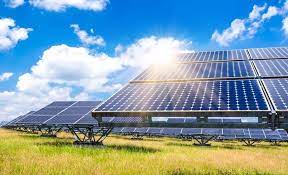India Is Now 3rd-Largest Solar Power Generator : Ember
India surpassed Japan in solar power production in 2023

Global Electricity Review 2024, annual report by energy think tank Ember, says that for the 1st time in the world, renewable energy is accounting for 30% of total energy generation.
India has become the world’s third largest solar power generator by overtaking Japan. This underscores a significant shift towards renewable energy sources in the global energy landscape.
India surpassed Japan in solar power production in 2023, generating 113 billion units (BU) compared to Japan’s 110 BU overtakes Japan in claim to the title of the world’s third-largest solar power generation. It is just behind China and the US which are number 1 & 2 of the world’s solar power generators. In 2023 it climbed from ninth ranking in 2015, to a third position in 2023, according to a report from global energy think tank Ember. The Global Electricity Review 2024 by Ember which offers a comprehensive review of the global power in 2023, based on data from individual countries.
Solar produced a record 5.5 per cent of global electricity in 2023. In line with the global trend, India generated 5.8 per cent of its electricity from solar last year, as reported in Ember’s “Global Electricity Review”.
Ember’s Asia Programme director Aditya Lolla said, “Increasing clean electricity is not just for reducing carbon emissions in the power sector. It is also needed to meet the rising electricity demand in an increasingly-electrified economy and to decouple economic growth from emissions, which is crucial for tackling climate change.”
Solar maintained its status as the world’s fastest-growing electricity source for the 19th consecutive year, adding more than twice as much new electricity worldwide as coal in 2023.
India saw the world’s fourth-largest increase in solar generation in 2023 (+18 terawatt hour or TWh), behind China (+156 TWh), the United States (+33 TWh) and Brazil (+22 TWh). Together, the top four solar growth countries accounted for 75 per cent of growth in 2023.
Solar’s contribution to electricity generation in India increased from 0.5 per cent in 2015 to 5.8 per cent in 2023.
According to the International Energy Agency’s (IEA) “Net Zero Emissions” scenario, solar would increase to 22 per cent of global electricity generation by 2030.
With electricity generation accounting for nearly half of India’s annual carbon dioxide emissions (1.18 gigatonnes in 2023), accelerating the transition to cleaner generation sources is imperative for the country to meet both its developmental and climate goals.
As part of its national plan to fight climate change, India has committed to achieving 50 per cent cumulative electric power installed capacity from non-fossil fuel-based energy resources by 2030.
The IEA says tripling the global RE capacity and doubling energy efficiency are crucial to limiting the average temperature rise to 1.5 degrees Celsius, a political target set in 2015 to prevent further worsening of climate impacts.
The writer of this article is Dr. Seema Javed, an environmentalist & a communications professional in the field of climate and energy




